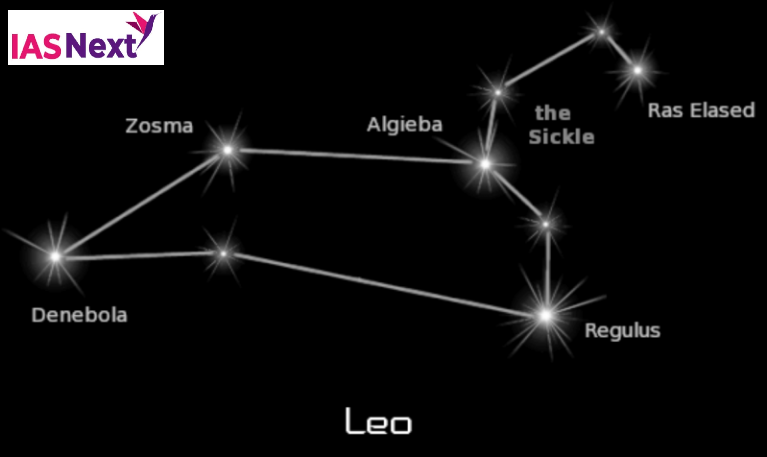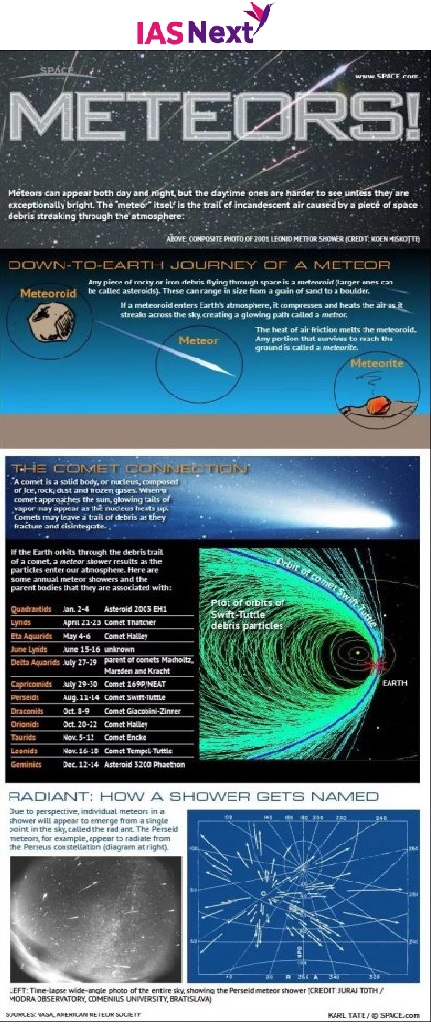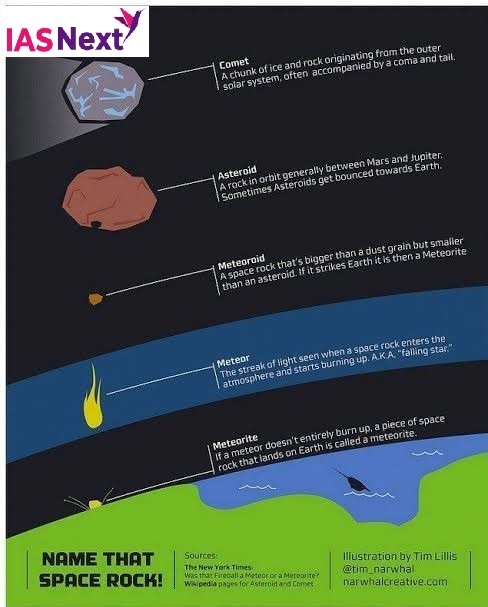CURRENT AFFAIRS
Get the most updated and recent current affair content on Padhaikaro.com
What is Leonids Meteor Shower?
- IAS NEXT, Lucknow
- 12, Nov 2021

Reference News:
The annual Leonids Meteor Shower has begun. This year’s shower is active between November 6 and 30, with peak activity expected on November 17.
What is Leonids Meteor Shower?
- The debris that forms this meteor shower originates from a small comet called 55P/Tempel-Tuttle in the constellation Leo, which takes 33 years to orbit the sun.
- The Leonids are considered to be a major shower that features the fastest meteors, which typically travel at speeds of 71 km per second.
Meteor Shower vs Storm:
Every 33 years, a Leonid shower turns into a meteor storm, which is when hundreds to thousands of meteors can be seen every hour.
- A meteor storm should have at least 1,000 meteors per hour. In 1966, a Leonid storm offered views of thousands of meteors that fell through the Earth’s atmosphere per minute during a period of 15 minutes.
- The last such storm took place in2002.

What are meteor showers?
- Meteors are bits of rock and ice that are ejected from comets as they manoeuvre around their orbits around the sun.
- Meteor showers are witnessed when Earth passes through the trail of debris left behind by a comet or an asteroid.
What Are the Differences Between An Asteroid, Comet, Meteoroid, Meteor and Meteorite?
- Asteroid: A relatively small, inactive, rocky body orbiting the Sun.
- Comet: A relatively small, at times active, object whose ices can vaporize in sunlight forming an atmosphere (coma) of dust and gas and, sometimes, a tail of dust and/or gas.
- Meteoroid: A small particle from a comet or asteroid orbiting the Sun.
- Meteor: The light phenomena which results when a meteoroid enters the Earth’s atmosphere and vaporizes; a shooting star.
- Meteorite: A meteoroid that survives its passage through the Earth’s atmosphere and lands upon the Earth’s surface.
